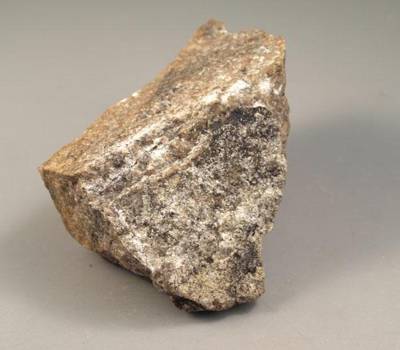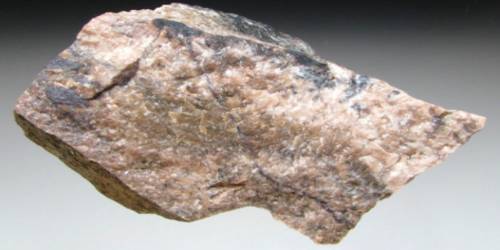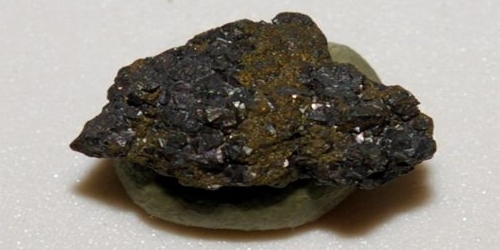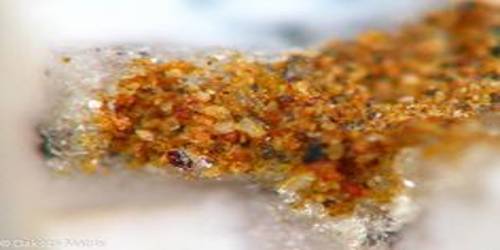Banalsite is a rare barium, sodium aluminum silicate mineral with formula: BaNa2Al4Si4O16. Banalsite is a tectosilicate of the feldspar group. It is not radioactive. It is an orthorhombic-pyramidal white mineral containing aluminum, barium, oxygen, silicon, and sodium.
Banalsite forms under hydrothermal or metamorphic conditions. The name banalsite was formulated from its constituent chemical elements (Ba, Na, Al, and Si). Banalsite and its strontium analogue, stronalsite (SrNa2A14Si4O16), constitute a complete solid solution series. In addition, a limited solid solution with calcium exists between these and lisetite: CaNa2Al4Si4O16.
General Information
- Category: Tectosilicate
- Formula: BaNa2Al4Si4O16
- Crystal system: Orthorhombic
- Crystal class: Pyramidal (mm2) H-M symbol: (mm2).

Properties
- Color: White
- Crystal habit: Rarely showing traces of crystal faces; coarsely crystalline to compact, massive
- Cleavage: Good on {110} and {001}
- Mohs scale hardness: 6.5
- Luster: Vitreous, pearly on cleavage
- Streak: White
- Diaphaneity: Translucent to transparent
- Specific gravity: 3.065
Occurrence
It was first described in 1944 as an occurrence in the Benallt Mine, Rhiw, Llanfaelrhys, Lleyn Peninsula, Gwynedd (Caernarvonshire), Wales. The name is derived from the chemical symbols of its composition. It has also been reported from Långban, Värmland, Sweden and from the Kalahari manganese field, Cape Province, South Africa. It has recently been reported from the nepheline syenites of the Zhidoy massif, Eastern Sayan, Siberia, Russia; the Prairie Lake complex of alkaline rocks and carbonatites, Superior Alkaline Province, northwestern Ontario, Canada; the Pilansberg peralkaline complex, South Africa; the Sakharjok alkaline complex in the Kola Alkaline Province, Kola Peninsula of northwestern Russia (the Gremyakha–Vyrmes peralkaline complex, and the Turiy Mys complex of ultramafic–alkaline rocks and carbonatites).
Information Source:
















